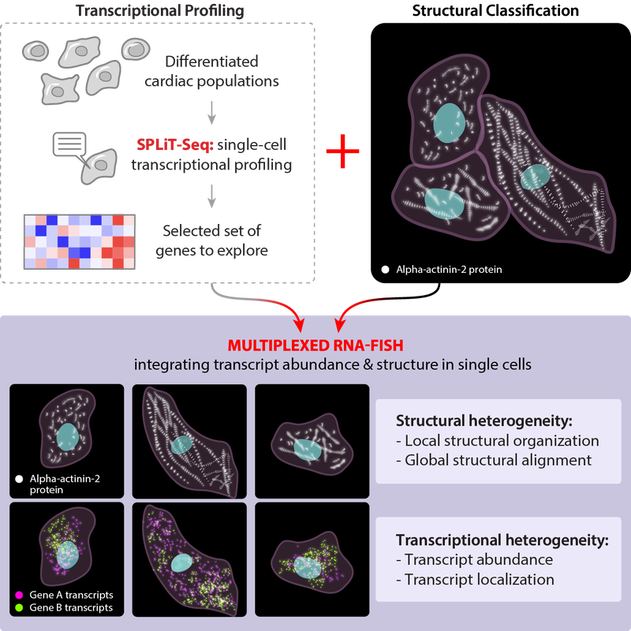Publication
Cell states beyond transcriptomics: integrating structural organization and gene expression in hiPSC-derived cardiomyocytes
We present a quantitative co-analysis of RNA abundance and sarcomere organization in single cells and an integrated framework to predict subcellular organization states from gene expression. This study establishes a framework for multi-dimensional analysis of single cells to study the relationships between gene expression and subcellular organization and to develop a more nuanced description of cell states.
Cell line used in the study to produce the dataset for all analyses: ACTN2-GFP (cell line ID: AICS-0075 cl.85) - more information about the cell line can be found on the Cell Catalog page.
Cell line used in the study to produce the dataset for all analyses: ACTN2-GFP (cell line ID: AICS-0075 cl.85) - more information about the cell line can be found on the Cell Catalog page.
Gene edited cells differentiate into cardiomyocytes
|
A.
|
B.
|
C.
|
Figure 1. After differentiation of the edited stem cells into cardiomyocytes, cells begin to beat spontaneously. Three videos taken at day 16 of differentiation show a variety of different rates and behaviors: (A) small contractile pulsing of the tissue, which remains attached to the bottom of the culture dish. (B) Wavelike, synchronous beating throughout the cardiac tissue, which has lifted off the bottom of the culture dish in most regions in this field of view. (C) Similar wavelike beating as seen in (B), however more vigorous and at a faster rate.
Playback speed is real time and each video is roughly 2.5mm across the field of view, taken from a standard camera looking through the microscope eyepiece.
Playback speed is real time and each video is roughly 2.5mm across the field of view, taken from a standard camera looking through the microscope eyepiece.
Figure 2. Many structures reorganize during differentiation. α-actinin found primarily in the rings and fiber bundles at the top and bottom of hiPSCs respectively are reorganized into the contractile apparatus of sarcomeres in cardiomyocytes.


